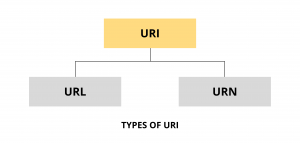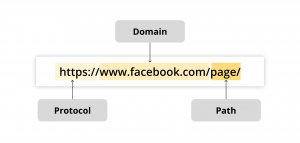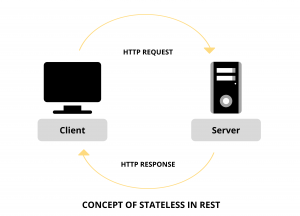We will explain Representational State Transfer (REST) principles to learn and what benefits you can get from learning.
Before 2000, Application Program Interface (or API as commonly known), was designed to be secure which was also very complex to develop and harder to maintain. A group of researchers, led by Roy Fielding, came up with the idea of REST (Representational State Transfer) which brought out the true power and potential of APIs in 2000. The purpose was to create communication between two servers that are located worldwide. They came up with principles, constraints and properties that constituted a resource-oriented architecture, client-server-based architecture, and interface uniformity which required no state preservation.
These were easily implemented using Hypertext Transfer Protocol (HTTP). It became a game-changer for the API landscape. The APIs developed under REST use less bandwidth. It is simple to develop and since the communication is supported via the internet, it is not required for the servers to be connected physically.
What is REST?
Rest stands for Representational State Transfer which is an architectural style that has gained popularity in recent years because of its simplicity and scalability. SOAP (Simple Object Access Protocol) was the de-facto way of accessing resources and communicating over the web before REST gained popularity.
RESTful APIs have also given various trends like cloud computing and microservices-based architecture. They have made communication and computing easy. Many companies prefer developers with REST knowledge as they help them develop products that are scalable, easy to maintain and make their products reach out to the world because of the power of the internet.
REST Resource
Every content in the REST architecture is considered as a resource. The resource is parallel to the object in the object-oriented programming world. They can be represented as text files, HTML pages, images or any other dynamic data. Every resource is identified globally using a URI.
What is URI?
URI is a short form of Uniform Resource Identifier used for identifying every resource of the REST architecture. Format of URI is:
<protocol>://<service-name>/<ResourceType>/<ResourceID>
There are two types of URI:

URN: Uniform Resource Name identifies the resource using a name that is unique and constant.
These follow the urn scheme and are usually prefixed with urn:
Examples:
urn:isbn:1234567890 is used for the identification of books based on the ISBN.
urn:mpeg:mpeg7:schema:2001 is the default namespace rule for metadata of MPEG-7 video.
It can easily be translated into a URL by using “resolver”once a URN identifies a document after which the document can be downloaded.
URL: Uniform Resource Locator contains the information about fetching of a resource from its location.
Examples:
http://abc.com/samplePage.html
ftp://sampleServer.com/sampleFile.zip
file:///home/interviewbit/sampleFile.txt
URLs start with a protocol like FTP, HTTP, etc and they have the information of the network hostname (sampleServer.com) and the path to the document(/samplepage.html).

Why should you care about REST?
In this section, we will discuss why REST principles are important and why it’s worth learning more about them.
- Easy to understand and implement
2. Makes your application more scalable
There are multiple reasons behind REST which help make an application more scalable:
- Stateless on the server side

- Faster data interchange format
- Caching is easier
- Easy to modify
- A layered system that organizes each type of server
- Code on demand
Conclusion
In this article, we have tried to express why we value REST and why we believe you should value it as well. We hope that after reading this, the reasons to get interested in REST standards are now more clear to you and can serve as a motivation to learn more about the topic.






Add comment